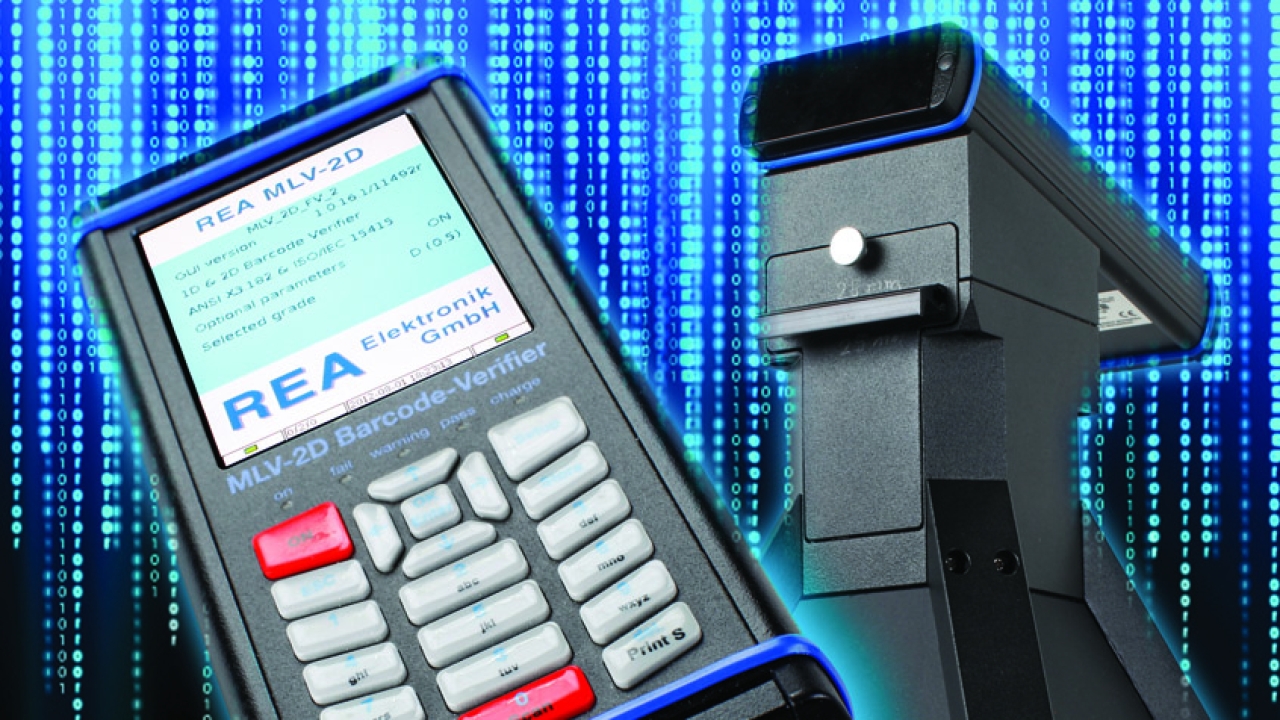Code green

Modern testing and marking technology can help end users avoid mistakes, increase efficiency and enhance safety, says Wilfried Weigelt, product manager at code verification device specialist REA
Concealed behind each code is important information. For example, the location of a package can be traced, product and serial number can be determined, but also – such as with a QR-code – additional data regarding a product can be provided. To assure that the information can be read without error it is essential that the codes work as perfectly as possible. With automatic data capture using a scanner, the error rate is between one in a million and one in a hundred million. With manual data capture there is a significant increase to around 1:30.
Code errors can result in the malfunction of data capture equipment and low reading speeds – and even falsified data. Errors create incorrect inventory, faulty deliveries, inaccurate invoices and further discrepancies. In addition, industries such as retail have their own guidelines for coding. When the requirements are not met there are penalties involved or entire batches are sent back to the manufacturer.
Consistent quality control is therefore recommended. Ideally, verification begins at the layout phase and is continued on a regular basis.
Devices such as the REA Verifier are critical for quality control. A product, milk for example, must be quickly and correctly scanned everywhere where it is sold, and retailers work with different barcode scanners at their cash registers. So the verifier provides a control under stable conditions and allows problems to be recognized and eliminated before an error in the application or at the customer occurs.
Market trends
We have seen more and more 'mobile tagging' in the last two years – 2D codes that can be scanned with a Smartphone. A distinct advantage compared to classical barcodes is the significantly reduced space requirement. Even more interesting, these codes are used by companies more and more often as a marketing tool. The prospective customer receives additional information about the product or service. Some examples are: Where is the product from? Which supply chain is involved? Is the meat from farmer A or B? This opens up a completely new field of communication for the industry and increases transparency for the customer at the same time. In industrial environments technical components and products are increasingly directly marketed (DPM – Direct Part Marking). This information can be read with automatic capture devices.
In the pharmaceutical industry safety has become a major issue with the increase in counterfeit medication introduced through the internet. In 2011 the EU introduced directive 2011/62/EU to combat counterfeit medicines, and this came into force Europe-wide in January 2013. In Turkey, similar regulations have been in force for over two years.
The EU legislation mandates unique codes to prevent counterfeit products reaching the pharmacy. By verifying the serial number against a secure database, counterfeits can be immediately recognized and reported. The authorities are then obligated to investigate. Expiration date, product number, batch number, production date and the serial number must be printed on the box or label using a suitable high resolution system.
About the author
Wilfried Weigelt has been with REA Elektronik since 1996 as manager of the Verifier business unit. He is a recognized expert in the barcode verification field, having collaborated on formulating the coding rules for compulsory verification of pharmaceuticals in the German market (securPharm). Weigelt is also a permanent collaborator with the DIN standards committee for automatic identification and data acquisition.
This article was published in Labels & Labeling issue 1, 2013
Stay up to date
Subscribe to the free Label News newsletter and receive the latest content every week. We'll never share your email address.

